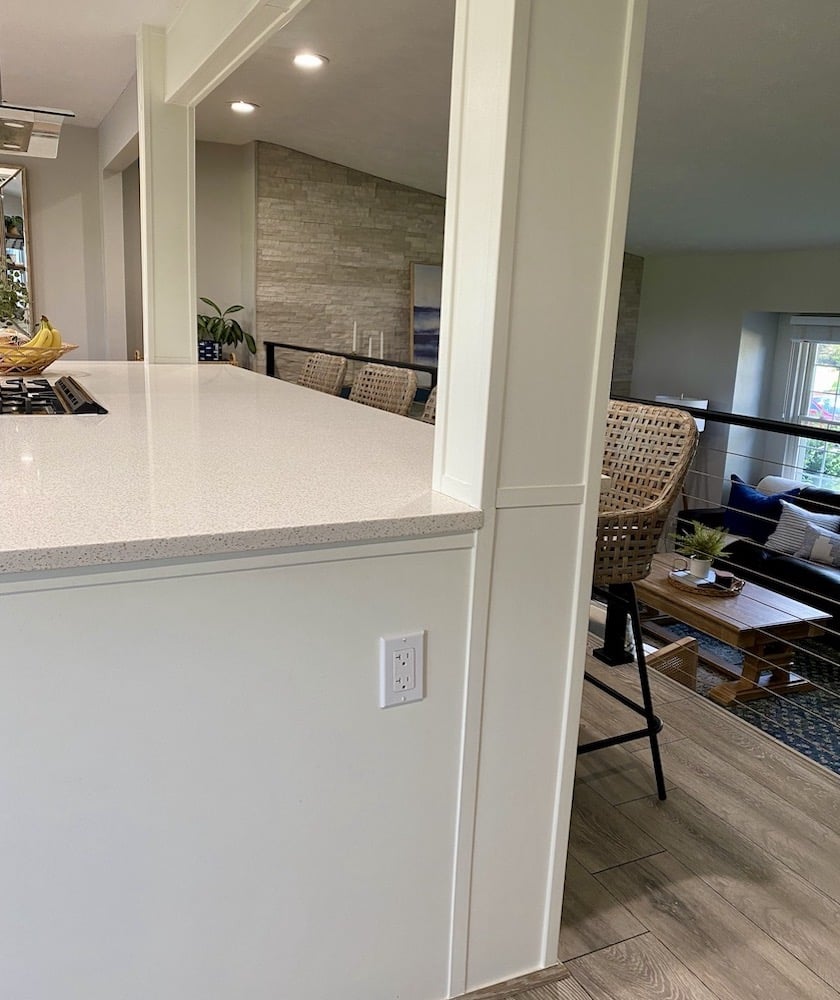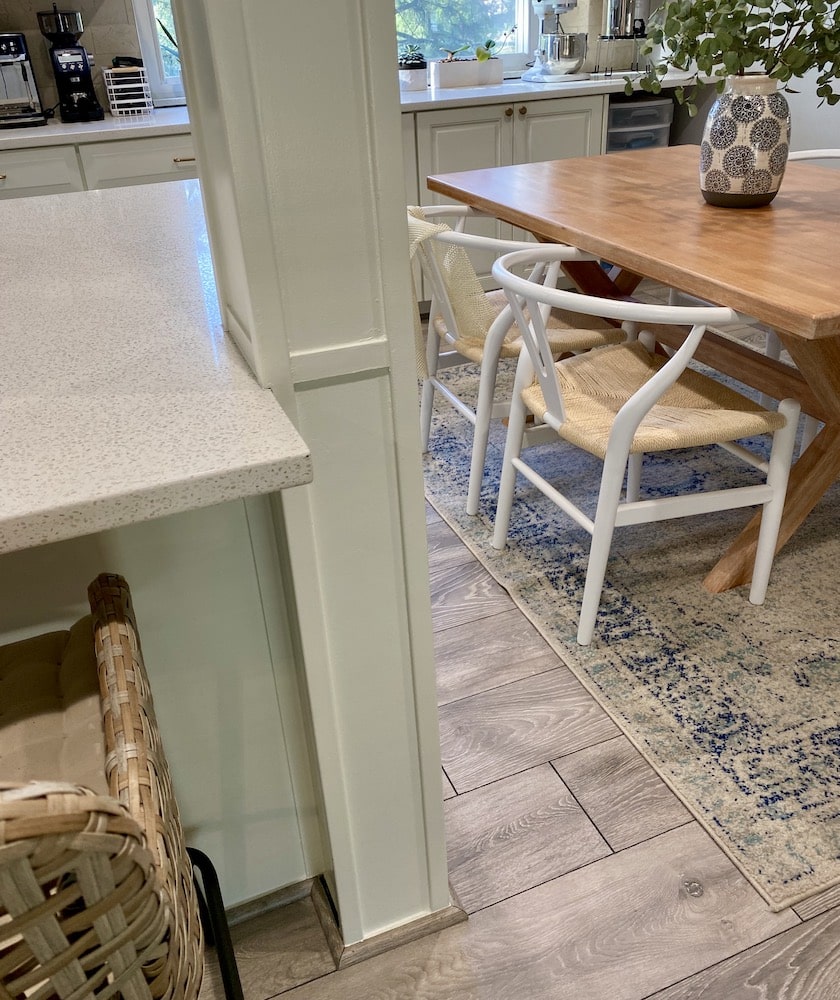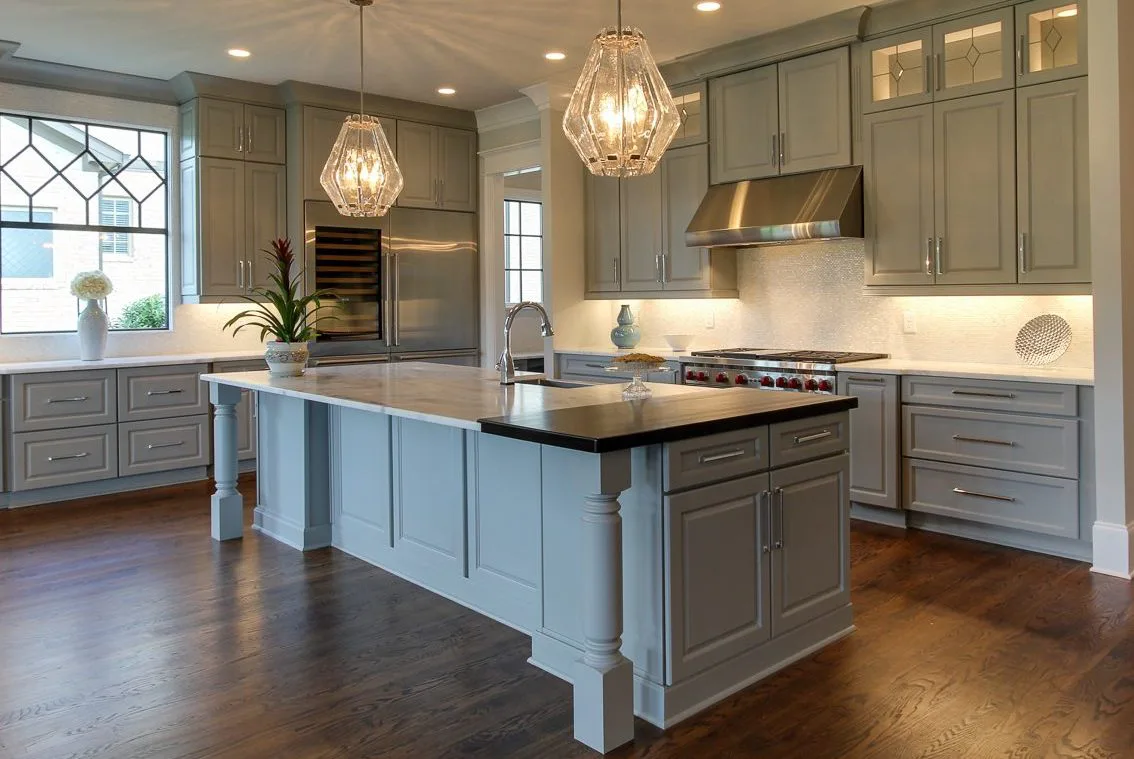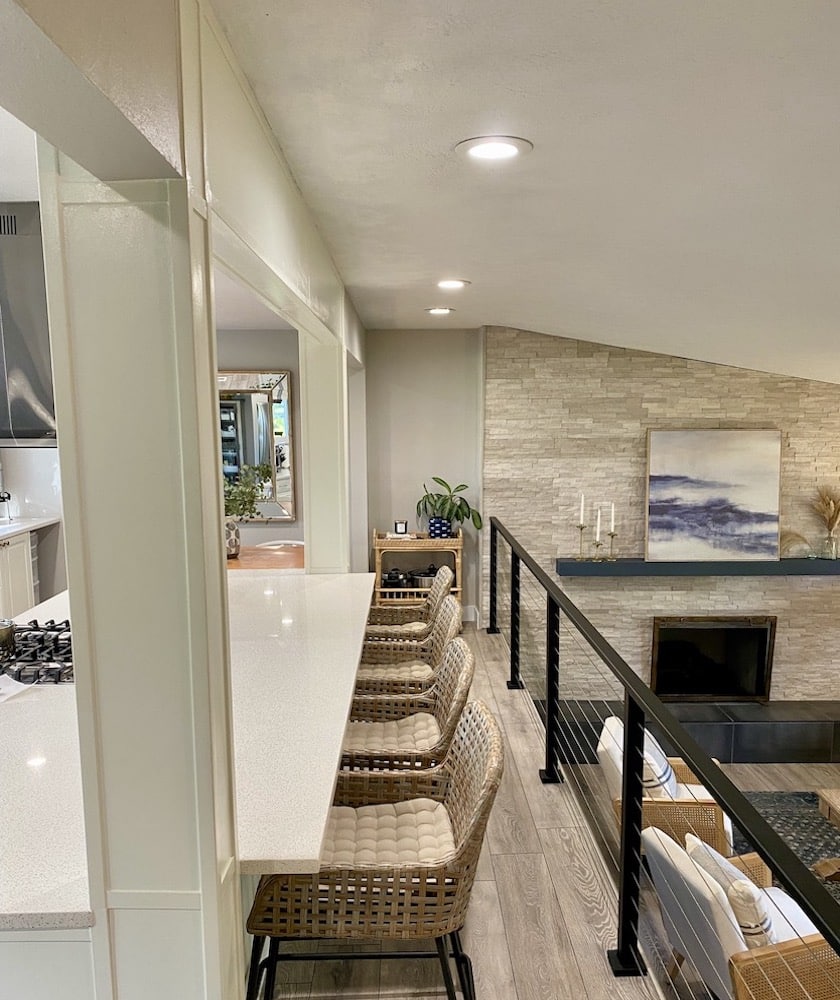Kitchen island with columns is not only a functional and practical addition to your kitchen but also a design feature that can enhance the overall aesthetics of the space. Decorating this unique element requires careful consideration of the columns’ size, style, and placement, as well as the overall theme of your kitchen. This guide will provide you with tips and ideas to help you effectively decorate a kitchen island with columns, creating a visually appealing and functional focal point.

Choosing the Right Columns:
- Consider the style: Select columns that align with the overall design theme of your kitchen. For a traditional or classic kitchen, opt for columns with ornate details, such as fluted or Corinthian columns. For a modern or contemporary kitchen island, sleek and minimalistic columns with clean lines will work well.
- Evaluate column size: Ensure the columns are proportionate to the size of your kitchen island. Larger kitchen islands can accommodate more substantial columns, while smaller islands may benefit from slimmer columns. Balancing the size of the columns with the island will create visual harmony.
- Material selection: Choose columns that complement the materials used in your kitchen. Common materials for columns include wood, stone, and metal. Consider the existing cabinetry, countertops, and flooring to select columns that harmonize with the overall color palette and finishes.
Column Placement and Design:
- Structural appeal: Determine the placement of the columns on the kitchen island based on their structural purpose. Columns can be placed at the corners of the island, providing support and stability while adding architectural interest.
- Visual symmetry: Consider the overall symmetry and balance of the columns when placing them on the kitchen island. Avoid placing them too close to the edges or crowding the island. Maintain equal spacing between the columns for a visually pleasing look.
- Column design details: Enhance the visual appeal of the columns by adding decorative elements or details. This can include fluting, capitals, or scrollwork, depending on the chosen style. Ensure these design details complement the overall aesthetic of the kitchen.

Decorating Around the Columns:
- Lighting fixtures: Utilize lighting to highlight the columns and draw attention to their architectural beauty. Install pendant lights above the kitchen island, directing the light toward the columns. This not only illuminates the space but also emphasizes the design features of the columns.
- Display shelves or cabinetry: Use the area around the columns to create additional storage or display features. Install open shelves or glass-front cabinetry on either side of the columns, allowing for the display of decorative items, cookbooks, or kitchenware. This can add visual interest and functionality to the round island kitchen.
- Countertop materials: Choose countertops that complement the columns for a cohesive and unified look. Consider materials such as granite, marble, or quartz that enhance the elegance of the columns. Install the countertops in a way that highlights the columns’ presence on the island.
- Incorporating seating: If space allows, consider incorporating seating options around the kitchen island. Add bar stools or chairs that align with the overall design theme. Ensure the seating does not obstruct the columns, allowing them to remain the focal point.
Personal Touches and Decorative Accents:
- Artwork and decorative panels: Adorn the area around the columns with artwork or decorative panels that align with the kitchen’s theme. Hang paintings, framed prints, or decorative panels on the wall sections around the columns to enhance the visual appeal.
- Greenery and plants: Introduce natural elements to the kitchen island by placing potted plants or fresh herbs around the columns. This brings a touch of freshness and softness to the space while adding color and texture.
- Decorative accessories: Display decorative accessories, such as vases, bowls, or decorative jars, on the kitchen island. Select items that complement the overall color scheme and style of the kitchen. These accessories can add personality and visual interest to the island and columns.

Advantages of kitchen island with columns
A kitchen island with columns is a distinct and visually appealing addition to any kitchen space. It not only offers functional advantages but also brings a touch of elegance and architectural interest to the overall design.
Enhanced Structural Support and Stability:
- Solid Construction: The presence of columns in a kitchen sink adds structural integrity and stability, especially for larger or heavier islands. Columns provide additional support, ensuring that the island remains stable and can withstand the weight and pressure associated with countertop materials, appliances, and seating arrangements.
- Load-Bearing Capability: Columns help distribute the weight of the island evenly, preventing sagging or warping over time. This load-bearing capacity is particularly beneficial for islands that house appliances such as cooktops or sinks.
- Long-Term Durability: Incorporating columns into the kitchen island’s construction enhances its overall durability, reducing the risk of issues such as cracking, bending, or wobbling. This ensures a long-lasting and reliable feature in the kitchen.

Architectural Elegance and Visual Impact:
- Focal Point in the Kitchen: The presence of columns creates an eye-catching focal point for the kitchen, adding a sense of grandeur and architectural interest. They bring a touch of elegance and sophistication to the overall design, acting as a visual anchor that draws attention and makes a statement.
- Personalized Aesthetics: Columns offer various design options, allowing homeowners to personalize their kitchen island to match their preferred style. Whether traditional, modern, or transitional, columns can be selected to complement the overall kitchen theme, adding a cohesive and visually pleasing element to the space.
- Design Versatility: Columns can be customized with decorative elements such as fluting, capitals, or ornate details, providing versatility in terms of design choices. This allows homeowners to tailor the columns to their specific aesthetic preferences, further enhancing the overall visual impact of the kitchen island.
Functional and Practical Benefits:
- Additional Storage Space: The incorporation of columns in a kitchen island creates opportunities for additional storage. Open shelves, cabinets, or drawers can be integrated into the areas surrounding the columns, providing convenient and easily accessible storage for kitchen utensils, cookbooks, or other culinary essentials.
- Defined Work Zones: Columns help define different work zones within the kitchen island, ensuring a clear separation between food prep, cooking, and eating areas. This allows for better organization and functionality, making it easier to work efficiently in the kitchen.
- Seating Integration: Kitchen islands with columns offer the opportunity to incorporate seating arrangements, such as bar stools or chairs, along one or more sides of the island. This facilitates social interaction and provides a comfortable space for family members or guests to gather, fostering a welcoming and inclusive atmosphere in the kitchen.

Conclusion:
Decorating a kitchen island with columns requires careful consideration of column selection, placement, and cohesive design elements. By choosing appropriate columns, considering placement, and incorporating complementary design features, you can transform your kitchen island into an eye-catching focal point. Remember to add personal touches and decorative accents that reflect your style and create a welcoming and stylish kitchen space.
